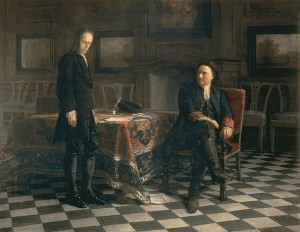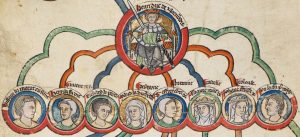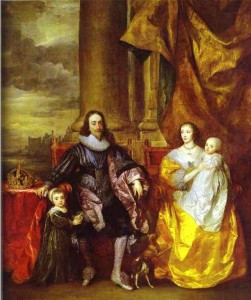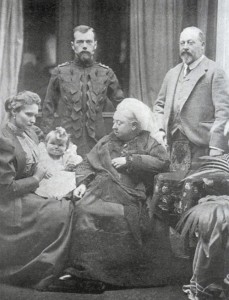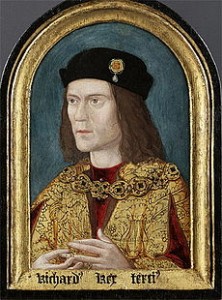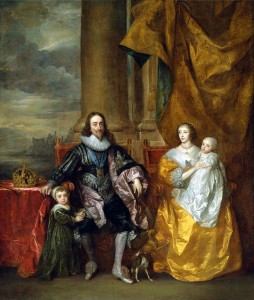 Royal History: The Tudor Brandons: Mary And Charles – Henry VIII’s Nearest & Dearest by Sarah-Beth Watkins by Sarah-Beth Watkins.
Royal History: The Tudor Brandons: Mary And Charles – Henry VIII’s Nearest & Dearest by Sarah-Beth Watkins by Sarah-Beth Watkins.
When Michael Hirst wrote the screenplay for the Showtimes series, The Tudors, he was fascinated by King Henry VIII’s lifelong friend and brother-in-law, Charles Brandon, Duke of Suffolk. Hirst wrote in The Tudors: Its’ Good to Be King, “Charles Brandon, was, perhaps, the only man in all of England to successfully retain Henry’s affection over a span of forty years.” Over the course of his reign, Henry remained close to Charles even though his friend committed the transgression of marrying the King’s widowed sister Mary without permission. Charles remained in favour even as Henry ordered the executions of formerly trusted advisers, Thomas More then Thomas Cromwell and queens, Anne Boleyn and Catherine Howard. Hirst made Charles a prominent character in The Tudors, giving the Duke and Duchess of Suffolk their most notable appearance in popular culture since the 1950s Walt Disney film, The Sword and the Rose.
Watkins, author of Lady Katherine Knollys, The Unacknowledged Daughter of Henry VIII, provides a short, readable biography of Charles and Mary in The Tudor Brandons. At the centre of the couple’s story is their elopement in 1515. Mary was the widow of King Louis XII of France and she married Charles Brandon to avoid being compelled to make another dynastic marriage. There would not be another instance of an English princess marrying a subject until Queen Victoria’s daughter Princess Louise married John Campbell, Lord Lorne in 1871. Watkins provides a thoughtful analysis of the circumstances surrounding the controversial royal wedding including reasons why Henry VIII was inclined to forgive the match and the implicit challenge to his authority.
The Tudor Brandons also includes Brandon’s family history (he descended from a long line of opportunists who were often on the wrong side of the law) and Mary’s continued role in Anglo-French relations including her presence at the Field of the Cloth of Gold summit between Henry VIII and Francis I. Mary also exerted a cultural influence at court, shaping trends in fashion and country house gardens in addition to popularizing picnic suppers for the elite. Charles and Mary’s granddaughter Lady Jane Grey, the nine days queen, became a significant figure in later Tudor history and the family remains a part of popular culture today (For another biography of Henry VIII’s younger sister, see Mary Rose by David Loades). ***
 History: Ivan’s War: Life and Death in the Red Army, 1939-1945
History: Ivan’s War: Life and Death in the Red Army, 1939-1945
There have been numerous books written about the experiences of the British “Tommy” or German “Fritz” fighting on the front lines of the Second World War. In Ivan’s War, Catherine Merridale, author of Red Fortress: History and Illusion in the Kremlin, examines the daily life of “Ivan,” the Soviet soldier in what became known in Russia as The Great Patriotic War. Merridale provides the details of daily life at the front. In the early days of the war, adequate training (not to mention regular rations) were in short supply. Unless soldiers brought their own socks, they spent the war marching in one size fits all foot wrappers. There was no standardized system of leave and military service therefore meant long separations from families who also suffered hardships during the war.
In addition to reconstructing the daily lives of soviet soldiers during the Second World War, Merridale examines broader questions about the motives and worldviews prevalent within the Red Army. What motivated individual soldiers to keep fighting under such harsh conditions? What were the differences in perspective between older people, who might have had military experience from the First World War and the reign of Nicholas II and younger people, who had never known any other political system than the Soviet regime? How were women and religious majorities perceived? What were the factors that contributed to the atrocities committed by the Red Army in Romania, Hungary and East Prussia? Merridale concludes with a thoughtful analysis of the lasting impact of the wartime experience and includes the perceptions of the surviving veterans. ****
 Historical Fiction: Water for Elephants: A Novel by Sara Gruen.
Historical Fiction: Water for Elephants: A Novel by Sara Gruen.
When veterinary student Jacob Jankowski loses his parents in a car accident, he leaves Cornell university and runs away with a 2nd tier traveling circus during the depression. The book was adapted into an Academy Award Winning film, Water for Elephants, starring Reese Witherspoon and Robert Pattinson. In the novel, Jacob is ninety – or perhaps ninety-three, he can’t quite remember – looking back on his youth at the circus from his retirement residence. There’s a realism to his old age but his past unfolds like a fairy tale where the heroine is a elephant named Rosie.
Gruen based the novel on a series of true events that took place in Depression era American circuses and the setting is compelling, filled with intrigues on trains between small towns and tensions between performers and roustabouts. The characters have rather one dimensional personalities, however, and the ending is unconvincing. For circus themed historical fiction with more compelling characters, I recommend The Autobiography of Mrs. Tom Thumb by Melanie Benjamin or Chang and Eng by Darin Strauss. ***

